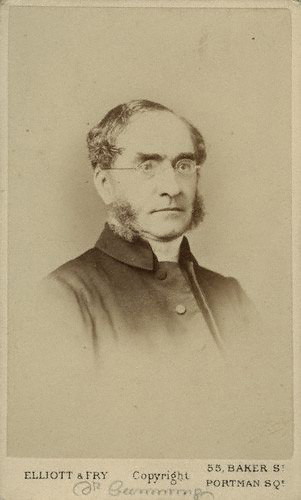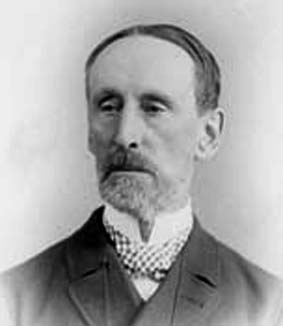Related Research Articles
Manuel John Johnson, FRS was a British astronomer.

John Cumming FRSE was a Scottish clergyman and religious author.

Morgan William Crofton was an Irish mathematician who contributed to the field of geometric probability theory. He also worked with James Joseph Sylvester and contributed an article on probability to the 9th edition of the Encyclopædia Britannica. Crofton's formula is named in his honour.
Gilbert Smithson Adair FRS was an early protein scientist who used osmotic pressure measurements to establish that haemoglobin was a tetramer under physiological conditions. This conclusion led him to be the first to identify cooperative binding, in the context of oxygen binding to haemoglobin.

William Bernard Robinson King was a British geologist.

Sir Kariamanikkam Srinivasa Krishnan was an Indian physicist. He was a co-discoverer of Raman scattering, for which his mentor C. V. Raman was awarded the 1930 Nobel Prize in Physics.
John Freeman Loutit CBE FRS FRCP, also known as 'Ian', was an Australian haematologist and radiobiologist.
Royal Institute of Public Health merged in 2008 with the Royal Society for Health to form Royal Society for Public Health (RSPH).
Joseph Jackson Lister FRS was a British zoologist and plant collector from Leytonstone who collected biological specimens during travels in Africa, Asia, Australasia and the Pacific region.
William Valentine Mayneord, CBE FRS was a British physicist and pioneer in the field of medical physics.
Walter Eric Spear was a German physicist noted for his pioneering work to help develop large area electronics and thin film displays. He was born in Frankfurt to a Jewish father and a Lutheran mother; by the time he finished his school examinations in 1938 life for Jews and people associated with Jews was becoming difficult. With the support of friends and relatives in Britain, the family were able to move to London, where he arrived in 1938 "with a small suitcase and a large cello".
Sir Thomas Tassell Grant KCB FRS was a notable inventor in the 19th century.
Philip Packer FRS was an English barrister and architect. He was a courtier to Charles II, and friend to Christopher Wren.
Francis Edgar Jones was a British physicist who co-developed the Oboe blind bombing system.
Arnulph Henry Reginald Mallock, FRS was a British scientific instrument designer and experimentalist.
The Keeper of Entomology was an entomological academic position within the Natural History Museum, London. The Keeper of Entomology served as the head of the Department of Entomology within the Museum. Originally, the post ranked as an Assistant Keeper to the Keeper of Zoology, known as the Assistant Keeper in Charge of Insects but reorganisation in 1913 saw entomology get its own department. Both are listed below:
The Keeper of Mineralogy is a geological academic position within the Natural History Museum, London. Following structural changes in the scientific departments in 2013 the Departments of Mineralogy and Palaeontology merged to become the Earth Sciences Department http://www.nhm.ac.uk/our-science/departments-and-staff/earth-sciences.html. The title Keeper of Mineralogy is no longer used. The current Head of the Department is Professor Richard Herrington http://www.nhm.ac.uk/our-science/departments-and-staff/staff-directory/richard-herrington.html
Alexandre Cazeau de Roumillac (1727–1796) was a French economist.

Milos Vratislav Novotny is an American chemist, currently the Distinguished Professor Emeritus and Director of the Novotny Glycoscience Laboratory and the Institute for Pheromone Research at Indiana University, and also a published author. Milos Novotny received his Bachelor of Science from the University of Brno, Czechoslovakia in 1962. In 1965, Novotny received his Ph.D. at the University of Brno. Novotny also holds honorary doctorates from Uppsala University, Masaryk University and Charles University, and he has been a major figure in analytical separation methods. Novotny was recognized for the development of PAGE Polyacrylamide Gel-filled Capillaries for Capillary Electrophoresis in 1993. In his years of work dedicated to analytical chemistry he has earned a reputation for being especially innovative in the field and has contributed a great deal to several analytical separation methods. Most notably, Milos has worked a great deal with microcolumn separation techniques of liquid chromatography, supercritical fluid chromatography, and capillary electrophoresis. Additionally, he is highly acclaimed for his research in proteomics and glycoanalysis and for identifying the first mammalian pheromones.

RV Clione (LT421) was a fisheries research vessel that was operated by the Ministry of Agriculture, Fisheries and Food - Directorate of Fisheries, now known as the Centre for Environment, Fisheries and Aquaculture Science (Cefas) between 1961 and 1988.
References
- ↑ http://www2.royalsociety.org/DServe/dserve.exe?dsqIni=Dserve.ini&dsqApp=Archive&dsqDb=Catalog&dsqSearch=RefNo=='EC%2F1984%2F10'&dsqCmd=Show.tcl, Biography at the Royal Society
- ↑ http://www.desty.org.uk/Desty_Memorial_Lecture/Desty.html Archived 2012-03-14 at the Wayback Machine , Desty Memorial Lecture